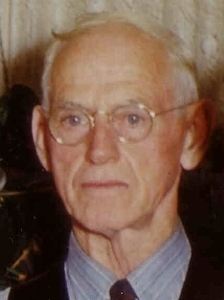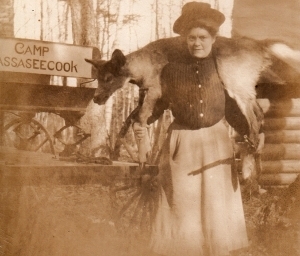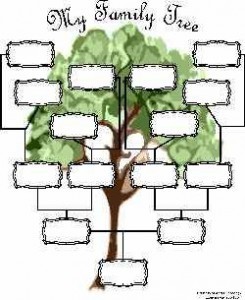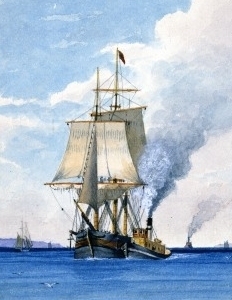All it Takes is One Clue
Kaitlyn Dunnett/Kathy Lynn Emerson here. Today I want to tell you a story about solving a real-life historical mystery. There’s no murder. There isn’t even a crime. That doesn’t cut down on the thrill of finding the one clue that leads to more discoveries and, finally, a solution to the puzzle. Where does one find such mysteries? Try climbing your family tree.

my grandfather, Fred Gorton
I’ve been interested in genealogy for a long, long time. My grandfather, who was born in 1878, put together a family history when he was in his eighties and I was still a pre-teen. He wrote to all his relatives to track down names and dates and recorded them meticulously. When he was done, he had a little pamphlet printed to distribute to everyone in the family. Of course, he insisted that it was his great-grandfather who first came to this country back in the 1790s, when it was really a much more distant ancestor back in the 1630s, but aside from that small misconception, he did a pretty good job, especially for a man who only had an 8th grade education.
These days, it is much easier to do genealogical research. Anyone who has ever seen an Ancestry.com commercial or watched Who do you think you are? has some idea of how to go about it and most of the research can be done online. The biggest stumbling block, however, is still the same thing that caused my grandfather to go astray—what someone in the family claimed was true . . . that isn’t.
That’s where the mystery solving comes in.

Susanna Hartley, Grandad’s mother
In the pursuit of my hobby, I’ve been climbing both my own family tree and my husband’s. One branch of his family in particular, the Hartleys, took some doing to untangle. It wasn’t that we didn’t have information on them. It was that some of what we had was wrong. Susanna Hartley was my husband’s great-grandmother. Her son, aka Grandad, always boasted that she was one of the “Philadelphia Hartleys,” making it sound as if the family was both wealthy and prominent in that city. Of course, this is the same man who claimed to be a direct descendant of Ralph Waldo Emerson—an out and out fabrication. He knew full well the family had been in Maine since right after the Revolutionary War. Then, too, there is the complication that Ralph Waldo has no descendants.
 When I took my first look at the Hartley connection, twenty or so years ago, I quickly discovered that the Hartleys might have settled in Pennsylvania, near Philadelphia, but they were definitely not part of the upper crust. They worked in the woolen mills there and sometimes traveled to Maine, Massachusetts, and New Hampshire to find similar work. The first of the family to come to the U.S., or so everyone said, was Ellis Hartley, who applied to become a citizen in 1872. On one of his daughters’ death certificates was the information that he had been born in Manchester, England. Extrapolating from census records, this would have been in about 1851.
When I took my first look at the Hartley connection, twenty or so years ago, I quickly discovered that the Hartleys might have settled in Pennsylvania, near Philadelphia, but they were definitely not part of the upper crust. They worked in the woolen mills there and sometimes traveled to Maine, Massachusetts, and New Hampshire to find similar work. The first of the family to come to the U.S., or so everyone said, was Ellis Hartley, who applied to become a citizen in 1872. On one of his daughters’ death certificates was the information that he had been born in Manchester, England. Extrapolating from census records, this would have been in about 1851.
A few years ago, I revisited my research. By then, I had access to Ancestry.com. I was sure that with a name like Ellis Hartley, he wouldn’t be all that hard to find in census records for Lancashire, England. Boy was I wrong. Ellis Hartley isn’t quite as bad as John Smith, but there were four or five of them in the right age range and geographical area. I made my best guess at which one he was, plugged the information into a family tree on the Ancestry.com website, and called it good.
About six months ago, another Ancestry.com subscriber contacted me out of the blue to say she thought our family trees were connected. According to her, Ellis Hartley was the son of John and Susanna Briggs Hartley . . . of Yorkshire. She didn’t have too much information. Her interest was in the Briggs family. But once she provided me with a clue—the fact that Ellis’s mother, uncle, aunt, and a few siblings all came over to the U.S. together—and a few more names, I was off and running. The confusion over what county Ellis came from? It turns out he was born in Lancashire, right on the border with Yorkshire, and the family moved about ten miles into the neighboring county when he was a boy.

painting of the sailing ship Saranak being towed into port by a steamboat
The most exciting discovery was a ship’s manifest for the Saranak for 1866. There was a reason Ellis Hartley hadn’t shown up in earlier searches. His name was spelled “Ellice” in the manifest. Other finds quickly followed—census records, birth records, marriage records—but I wasn’t having any luck figuring out what happened to Ellis’s father. Then it dawned on me that he might have come over earlier, to scout the land, as it were, and there he was. He didn’t arrive in Philadelphia, where the Saranak landed. He came by way of New York, about six months earlier, together with his oldest son and a married daughter.
I won’t go on and on—relating adventures in genealogy can be right up there with showing off baby (or cat) pictures—but if anyone is interested in reading the results of my research into family history, the index to my grandfather’s biography and various family trees I’m working on can be found online at Family History along with an assortment of photos of people and places. The real message here is that if you enjoy solving mysteries as a reader, you might also like to try solving them in your own family, exposing misconceptions, finding clues, and eventually figuring out where the story really began.
Lea Wait's Blog
- Lea Wait's profile
- 509 followers



